The art of protest
In this edition: Some inspo for protesting, my new newsletter and helping out fire victims
I’m at home with a touch of flu, slightly toasted from the NyQuil I had last night, so bear with…
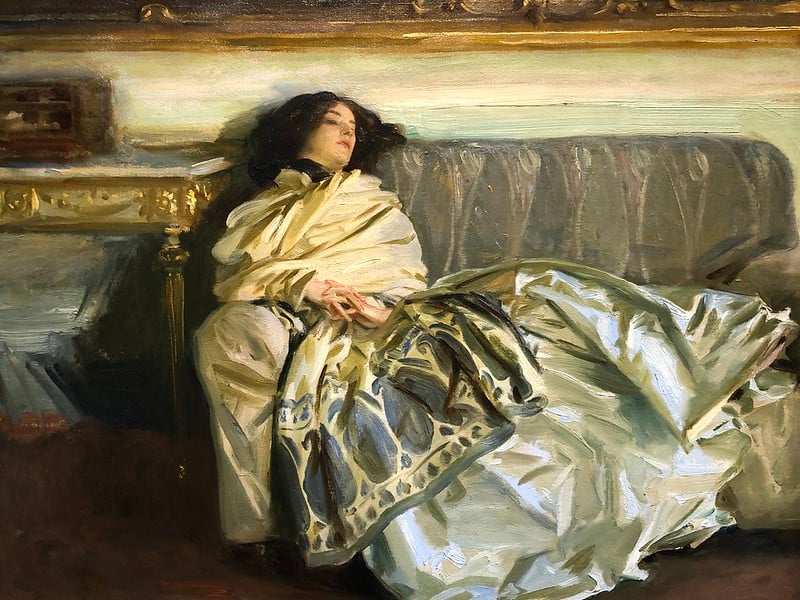
SOME NEWS
In late January, I started writing the Art Insider newsletter for KCRW. My latest is on a show inspired by Alice Coltrane at the Hammer Museum that I dug for the message it sends about creating your own communities when the ones you inhabit no longer serve you.
The newsletter is an opportunity to cover what’s happening artistically in Los Angeles. It’s also an opportunity to work with writers admire. Art Insider will regularly feature guest writers covering a range of topics.
To subscribe, hit this link and select Art Insider. The newsletter lands once a week on Tuesday afternoons and it’s 100% free. But, if you’d like to support this work, KCRW would always welcome a donation, no matter how small.

HITTING THE STREETS
Over the last few months, I’ve been thinking a lot about protest. Recently, I participated in one of the #TeslaTakedown protests, which offered the camaraderie of strangers who are as frustrated as I am by what’s happening in Washington, D.C.
This morning, I opened my Instagram to find footage of a carnival celebration in Ayacucho, Peru, in which the performers turned a parade into a fine opportunity to tear into the country’s president, Dina Boluarte. The lyrics of the happy-sounding song they perform basically accuses Boluarte of being a dictator. It’s pretty fantastic.
As we hit the streets, I thought it might be inspiring to think about the ways in which art and dance and other facets of performance can make protest a more resonant act.
Recently, a crew of dancers in D.C. performed Pina Bausch’s “Nelken Line” to protest Trump’s takeover of the Kennedy Center. I wish I could have seen this in person. Thankfully, Dance Magazine posted video to Instagram and Facebook — and it’s pretty terrific.
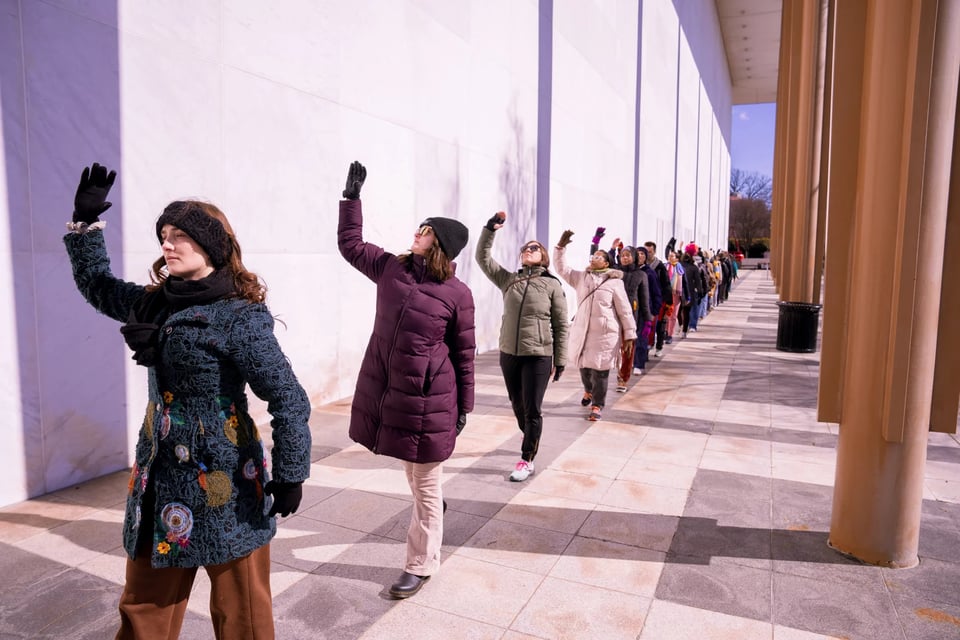
If there’s any place that knows a thing or two about protesting the U.S. government, it’s Puerto Rico. In 2019, there were major street actions against Gov. Ricardo Roselló (who ultimately resigned) — and protestors turned up on land, underwater, and even in the air (protest acrobats!). My favorite was the “perreo combativo” — protest twerking. Which led to one of the most amazing phrases ever uttered on the nightly news, when anchor Jorge Rivera Nieves announced, “El perro intenso acaba de comenzar” — “the intense twerking has now begun.” It turned protesting into a defiantly joyous act.
Related: The Washington Post had a good story about the role of music in these events.
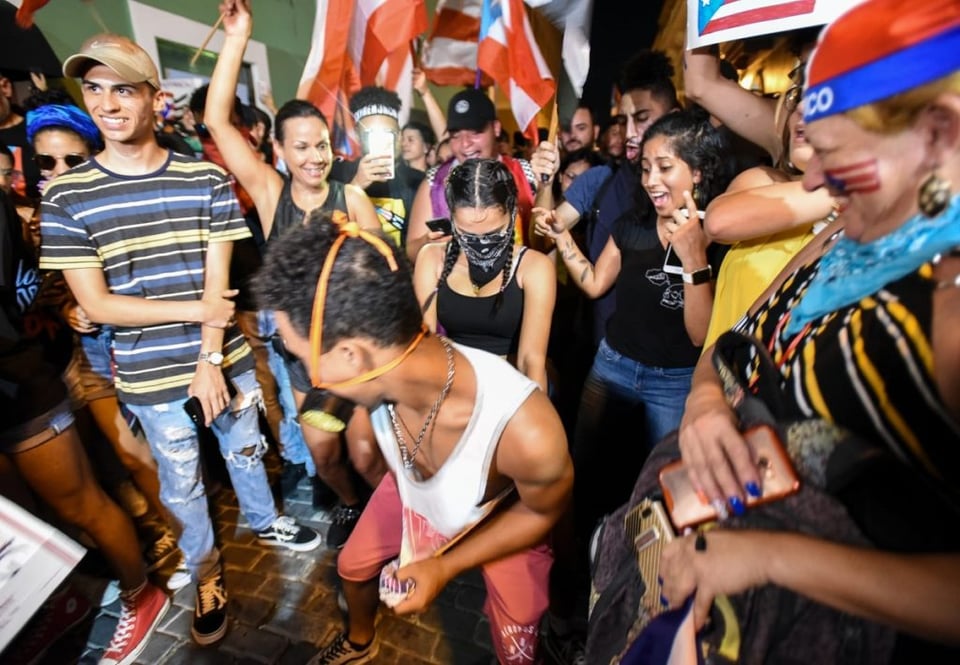
In 2014, 43 Mexican pedagogy students disappeared in Ayotzinapa. This led to protests all over the country, as people took to the streets to demand answers from government officials on the students’ fate. The placards employed in these actions weren’t simply sharpie on construction paper. Instead, banners featured elaborate graphics influenced by Indigenous art and unforgettable papier-mâché masks. I wrote about it for The Times in 2015. It’s a remarkable use of visual art to make a statement.
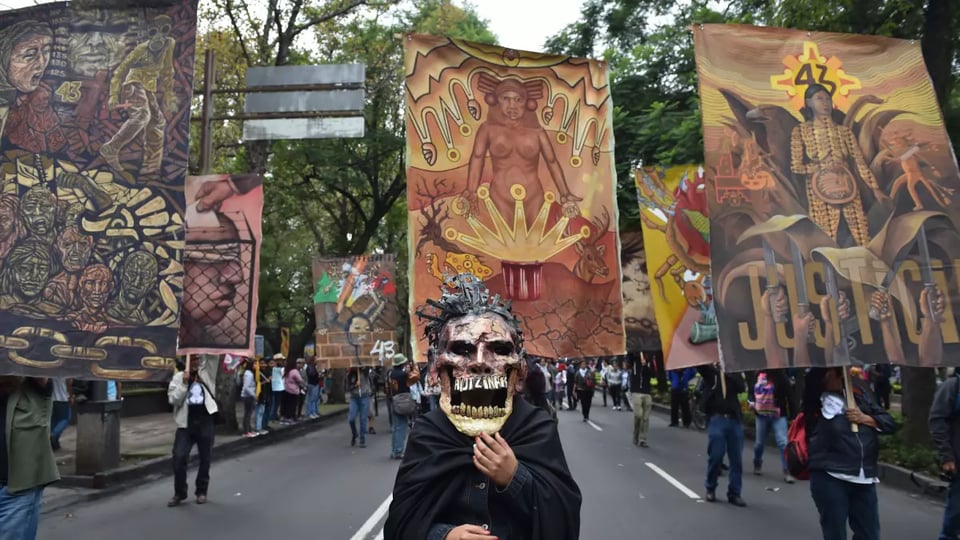
The AIDS crisis of the ‘80s and ‘90s brought all kinds of protests to the streets, including die-ins (recently resuscitated by fired USAID workers and advocates for people with HIV). But the one action that will always remain seared in my memory is an ACT UP protest from 1992, when queer activists tossed the ashes of their loved ones onto the White House lawn. I remember seeing it on the news and was moved by the poignance and rage of citizens demanding their government do something to stem all the death.
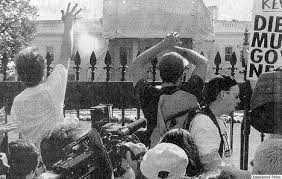
During the military dictatorship in Chile, there was a form of dance protest that was really formative to me as a writer. I’ll be talking about it as part of “Tren al Sur” on Thursday, March 13 at the Nimoy in Westwood with the inimitable Raquel Gutierrez. It’s part of CAP UCLA’s L.A. Omnibus and we’ll be joined by musicians Rubén Martínez, Júan Pérez and Marco Amador. It’ll be a great night. All the deets are here. Would love to see you there!
THE FIRES
The fires still haunt Los Angeles: The thousands displaced the homes lost, the communities scattered. I’ve gone to visit the sites — and it is devastating. Some blocks have been leveled, others survive. In some cases, a garden remains green, but the home that once stood behind it is ash. In other cases, random structures stand unscathed on a block that has otherwise burned. The randomness makes it feel more bewildering.
I’ve resisted posting photos becuase I’m wary of posting ruin porn on social media for Mark Zuckerberg’s profit. But since I pay to use this newsletter service, I though I’d share the following image. Walking around Altadena I came across the skeleton of what was once a mattress…

…and I wondered what dreams were had here, what love was made. I hope the person it belonged got away unscathed.
I wrote a piece for The Atlantic about the tendency to quote Joan Didion and Mike Davis whenever fire erupts in Southern California. (tl;dr: ditch Didion, keep Davis — with an addition.) But I feel like I’m still trying to wrap my head around the magnitude of this disaster to see how else I might be of service as a writer.
There are countless organizations and individuals that could use your support. But Grief and Hope Los Angeles, founded by artists Andrea Bowers and Kathryn Andrews, is a great place to start. It is supporting the many artists who lost their homes and studios. Plus, here is a spreadsheet of GoFundMes for Black families displaced by the Eaton Fire. Likewise, organizations like World Central Kitchen and the Red Cross have been vital to recovery efforts. There are other ways to help, too: If you live in a red state, call your Congressional representatives and tell them how important FEMA is to you.
Thanks for reading. Be back soon.
Add a comment: